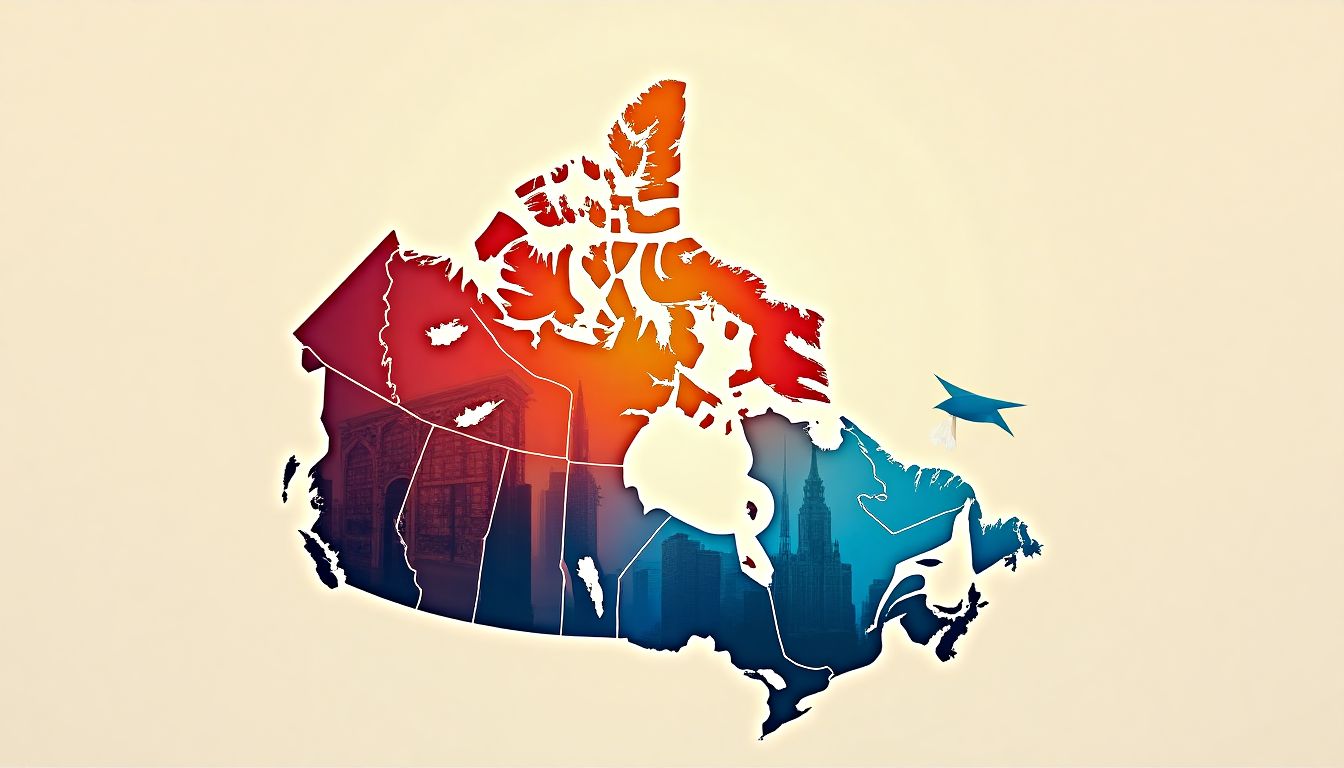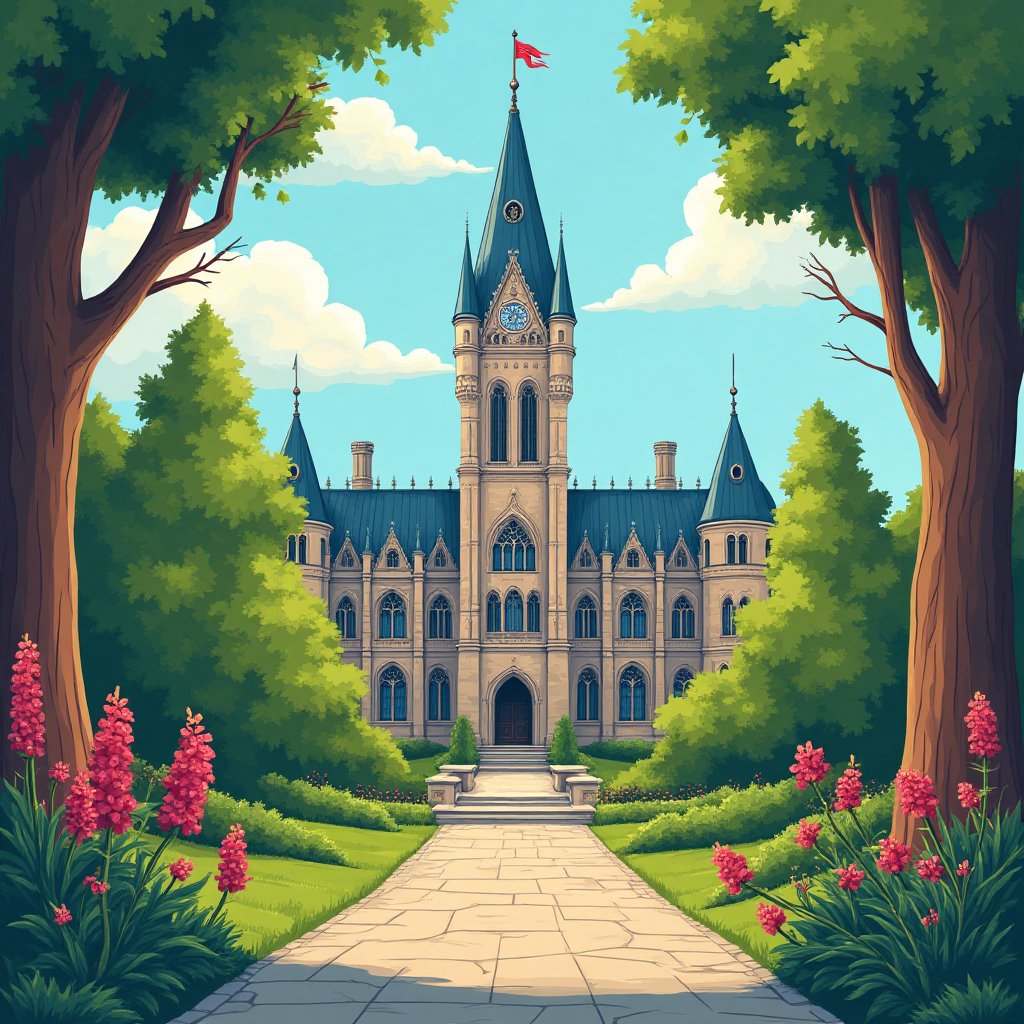Every year, thousands of students across Canada and beyond dream of securing a spot at one of the country’s top universities. But here’s the kicker: only a fraction of them will make the cut. The competition is fierce, and the stakes are high. As Malcolm Gladwell, author of Outliers, once noted, "Success is not a random act. It arises out of a predictable and powerful set of circumstances and opportunities." For many, those opportunities begin with a university acceptance letter. But which Canadian university is the hardest to get into? And what does it take to crack the code?
Renowned education researcher Ken Bain, author of What the Best College Students Do, emphasizes that the admissions process is more than just numbers—it’s about potential, passion, and perseverance. Meanwhile, Angela Duckworth, the psychologist behind Grit: The Power of Passion and Perseverance, argues that resilience is key to overcoming the odds. So, what does it take to stand out in a sea of applicants? Let’s dive into the world of Canadian university admissions and uncover the institution with the lowest acceptance rate.
For students in cities like Toronto, Vancouver, and Montreal, the journey to university can feel like a marathon. But with the right resources and insights, it’s a race worth running. This article will explore the university with the lowest acceptance rate, the factors that make it so competitive, and how technology, particularly AI, could revolutionize the admissions process.
Understanding Acceptance Rates in Canadian Universities
Acceptance rates are like the bouncers of the university world—they decide who gets in and who doesn’t. Simply put, an acceptance rate is the percentage of applicants who are admitted to a university. For example, if a university receives 10,000 applications and admits 1,000 students, its acceptance rate is 10%. It’s a key metric for students because it gives them a sense of how competitive a school is. But it’s not just about numbers. Acceptance rates can tell a story about a university’s reputation, the popularity of its programs, and even its geographic location.
Several factors influence acceptance rates. First, there’s program popularity. Programs like medicine, engineering, and business often have lower acceptance rates because they’re in high demand. Then there’s the university’s reputation. Schools like the University of Toronto and McGill University are known for their academic excellence, which makes them more competitive. Geographic location also plays a role. Universities in major cities like Toronto, Vancouver, and Montreal tend to attract more applicants, driving down their acceptance rates.
When compared to global standards, Canadian universities are relatively accessible. For instance, the acceptance rate at Harvard University in the U.S. is around 4%, while the University of Toronto’s is closer to 43%. But don’t let that fool you—some programs at Canadian universities are just as competitive as their international counterparts. For students in cities like Toronto and Vancouver, understanding these nuances is crucial for making informed decisions about where to apply.
### The Canadian University with the Lowest Acceptance Rate
When it comes to Canadian universities, one institution stands out for its notoriously low acceptance rate: the **University of Toronto**. Known for its academic rigor and global reputation, U of T is a magnet for top-tier students worldwide. But what makes it so exclusive? Let’s dive in.
#### Identifying the University
The **University of Toronto** consistently ranks as one of the most competitive universities in Canada, with an acceptance rate hovering around **43%** for undergraduate programs. For highly sought-after programs like **Computer Science**, **Engineering**, and **Rotman Commerce**, the acceptance rate can drop to as low as **10%**. That’s like trying to win a lottery ticket to Hogwarts—except the sorting hat is an admissions committee.
#### Historical Trends
Over the past decade, U of T’s acceptance rate has steadily declined. In 2010, the acceptance rate was around **60%**, but as its global reputation soared, so did the number of applications. By 2023, the university received over **90,000 applications** for just **15,000 spots**. It’s like trying to fit an entire stadium into a subway car during rush hour.
#### Program-Specific Rates
Not all programs are created equal. While some programs at U of T are more accessible, others are fiercely competitive. For example, the **Faculty of Medicine** has an acceptance rate of just **8%**, making it one of the toughest programs to crack in the country. Meanwhile, the **Munk School of Global Affairs** attracts students from around the world, with acceptance rates often below **15%**.
#### Local Impact
U of T’s competitiveness has a ripple effect on cities like **Toronto**. The university is a major employer and a hub for innovation, attracting talent and investment to the city. For students in Toronto, U of T is both a dream and a challenge. Local resources like **[Toronto News](https://inthacity.com/headlines/canada/toronto-news.php)** provide valuable insights and updates for aspiring applicants.
### Why Is This University So Competitive?
#### Academic Excellence
The **University of Toronto** is a powerhouse of academic achievement. It’s home to groundbreaking research, Nobel laureates, and some of the brightest minds in the world. With over **700 undergraduate programs** and **200 graduate programs**, U of T offers unparalleled opportunities for students. It’s like the Avengers of universities—except instead of saving the world, they’re publishing groundbreaking research.
#### Global Rankings
U of T consistently ranks among the top universities globally. In the **2023 QS World University Rankings**, it placed **21st** worldwide and **1st in Canada**. Its reputation attracts students from over **160 countries**, making it a truly global institution.
#### Admission Criteria
Getting into U of T isn’t just about good grades—it’s about standing out in a sea of overachievers. The university looks for a combination of high **GPA**, strong **standardized test scores**, and impressive **extracurricular activities**. For international students, English proficiency tests like **IELTS** or **TOEFL** are also required. It’s like assembling a superhero team—every member needs to bring something unique to the table.
#### Local Resources
For students in **Toronto**, preparing for U of T’s rigorous admissions process can feel overwhelming. Fortunately, local resources like **[Toronto News](https://inthacity.com/headlines/canada/toronto-news.php)** offer guidance and support. From test prep tips to application deadlines, these resources can make the journey a little less daunting.

Challenges Faced by Applicants
Applying to a top Canadian university is no small feat. The competition is fierce, and the stakes are high. For many students, the journey to acceptance is filled with obstacles that can feel insurmountable. Let’s break down the key challenges applicants face and how they can navigate them.
High Competition
With thousands of students vying for a limited number of spots, the competition is intense. Universities like the University of Toronto and McGill University receive tens of thousands of applications each year, but only a fraction are accepted. This creates a high-pressure environment where even the smallest misstep can make a difference. For students in cities like Toronto and Vancouver, where these universities are located, the local competition can be even more intense.
Financial Barriers
Tuition fees and living costs can be a significant barrier for many students. While Canadian universities are generally more affordable than their counterparts in the US, the costs can still be prohibitive. For example, international students often face higher tuition fees, and even domestic students may struggle with the cost of living in expensive cities like Vancouver or Toronto. Scholarships and financial aid are available, but they are highly competitive and often not enough to cover all expenses.
Geographic Limitations
For students outside major urban centers, geographic limitations can be a significant hurdle. Access to resources like tutoring, test prep, and extracurricular activities may be limited in smaller towns or rural areas. International students face additional challenges, such as visa requirements and cultural adjustments. Local resources in cities like Montreal and Vancouver can help bridge this gap, but not all students have access to these opportunities.
Local Support
Despite these challenges, there are many local organizations and resources that can help students navigate the admissions process. For example, Toronto and Vancouver have numerous tutoring centers, mentorship programs, and community organizations dedicated to helping students succeed. These resources can provide valuable support, from test prep to application advice, and can make a significant difference in a student’s chances of acceptance.
The Future of University Admissions in Canada
The landscape of university admissions is constantly evolving, and the future promises to bring even more changes. From emerging trends to technological advancements, here’s what students, parents, and educators can expect in the coming years.
Trends in Admissions
One of the most significant trends in university admissions is the move toward holistic admissions. This approach considers not just grades and test scores, but also extracurricular activities, personal essays, and letters of recommendation. Test-optional policies are also becoming more common, with many universities no longer requiring standardized tests like the SAT or ACT. These changes aim to create a more equitable admissions process that considers the whole student, not just their academic achievements.
Impact of Technology
Technology is playing an increasingly important role in the admissions process. From online applications to virtual campus tours, technology is making it easier for students to apply to universities. AI is also being used to analyze application data and predict trends, helping universities make more informed decisions. For example, AI can identify patterns in successful applications and provide personalized feedback to students. This technology has the potential to make the admissions process more efficient and fair.
Diversity and Inclusion
Efforts to make university admissions more diverse and inclusive are also gaining momentum. Universities are implementing policies to increase the representation of underrepresented groups, such as Indigenous students, first-generation students, and students from low-income backgrounds. These efforts include targeted outreach programs, scholarships, and support services designed to help these students succeed. Cities like Toronto and Montreal are leading the way in these initiatives, with local organizations playing a key role in supporting students.
Local Initiatives
Local initiatives are also driving innovation in university admissions. For example, Vancouver has launched programs to help students from diverse backgrounds prepare for university, including mentorship programs and workshops on the application process. These initiatives are helping to level the playing field and ensure that all students have the opportunity to succeed. As these programs continue to grow, they will play an increasingly important role in shaping the future of university admissions in Canada.
AI Solutions: How Could AI Help?
Artificial Intelligence (AI) is no longer a futuristic concept—it’s here, and it’s transforming industries, including education. When it comes to university admissions, AI has the potential to revolutionize the process, making it more efficient, equitable, and personalized. Here’s how:
Data Analysis and Predictive Modeling
AI can analyze vast amounts of historical admission data to identify trends and predict future outcomes. For example, by examining patterns in successful applications, AI can help universities refine their criteria and applicants understand what it takes to get in. Tools like IBM Watson and TensorFlow are already being used in similar predictive analytics across industries.
Personalized Application Guidance
AI-powered platforms can provide tailored advice to students based on their academic profiles, extracurriculars, and career goals. Imagine a virtual admissions counselor that suggests the best programs, helps craft compelling essays, and even predicts scholarship opportunities. Companies like Knewton are pioneering adaptive learning technologies that could be adapted for this purpose.
Bias Reduction in Admissions
One of the most promising applications of AI is its ability to reduce unconscious bias. By standardizing the evaluation process and focusing on objective criteria, AI can help ensure that admissions decisions are fair and equitable. For instance, Pymetrics uses neuroscience-based games to assess candidates, a model that could be adapted for university admissions.
Automating Administrative Tasks
AI can streamline time-consuming tasks like document verification, application tracking, and communication with applicants. This not only speeds up the process but also frees up admissions officers to focus on more strategic decisions. Tools like UiPath are already automating administrative workflows in various sectors.
Local Integration and Pilot Programs
To ensure these solutions are effective, universities can partner with local organizations in cities like Toronto, Vancouver, and Montreal to pilot AI tools. These partnerships can provide valuable feedback and help refine the technology for broader implementation.
Action Schedule/Roadmap (Day 1 to Year 2)
Day 1: Assemble a multidisciplinary team of AI experts, data scientists, educators, and admissions professionals. Key players could include representatives from University of Toronto, McGill University, and UBC.
Week 1: Collect and clean historical admission data from Canadian universities. Use tools like Tableau to visualize trends and identify key metrics.
Month 1: Develop AI algorithms for data analysis and prediction. Leverage open-source platforms like Scikit-Learn and PyTorch to build robust models.
Month 2: Pilot AI tools in local high schools and community colleges in Toronto and Vancouver. Gather feedback from students, teachers, and admissions officers.
Year 1: Evaluate pilot results and refine AI tools. Focus on improving accuracy, reducing bias, and enhancing user experience.
Year 1.5: Expand AI tools to other Canadian cities like Montreal and Calgary. Partner with local educational organizations to ensure widespread adoption.
Year 2: Launch a nationwide AI-powered admissions platform. Collaborate with Universities Canada to promote the platform and provide training for admissions teams across the country.
Making University Admissions Accessible and Equitable
As we’ve explored, the university with the lowest acceptance rate in Canada is a testament to academic excellence and rigorous standards. However, it also highlights the challenges faced by students navigating the competitive admissions landscape. AI offers a promising solution, with the potential to make the process more efficient, personalized, and fair.
By leveraging AI for data analysis, personalized guidance, bias reduction, and administrative automation, universities can not only improve their admissions processes but also make higher education more accessible to a diverse range of students. Local initiatives in cities like Toronto, Vancouver, and Montreal are paving the way for these innovations, ensuring that students have the resources they need to succeed.
As we look to the future, it’s clear that technology will play a pivotal role in shaping the next generation of university admissions. But beyond the algorithms and data, the ultimate goal is to create a system that values diversity, equity, and inclusion—a system that gives every student a fair shot at achieving their dreams.
What do you think? Could AI be the key to unlocking a more equitable admissions process? How can we ensure that technology serves all students, regardless of their background? Share your thoughts in the comments below, and don’t forget to subscribe to our newsletter for more insights into the future of education and technology. Become a permanent resident of iNthacity: the "Shining City on the Web" and join the conversation!
FAQ
What is an acceptance rate?
An acceptance rate is the percentage of applicants who are admitted to a university. For example, if a university receives 10,000 applications and accepts 1,000 students, its acceptance rate is 10%. This number helps students understand how competitive a university is. You can learn more about how acceptance rates work on Wikipedia.
Which Canadian university has the lowest acceptance rate?
Based on recent data, the University of Toronto is often cited as one of the most competitive universities in Canada, with some programs having acceptance rates as low as 10%. However, acceptance rates can vary by program and year. For more details, check out their admissions page.
How can AI help with university admissions?
AI can revolutionize university admissions in several ways:
- Data Analysis: AI can analyze historical admission data to predict trends and identify patterns.
- Personalized Guidance: AI tools can provide tailored advice to applicants based on their profiles.
- Bias Reduction: AI can help reduce unconscious bias in the admissions process.
- Efficiency: Automating administrative tasks can speed up the process and reduce errors.
For more on AI in education, visit IBM’s AI in Education page.
Where can I find local resources for university applications?
If you’re in Toronto, Vancouver, or Montreal, you can find helpful local resources and news on university admissions on inthacity.com. These portals provide up-to-date information and tips for applicants.
What are the challenges of applying to competitive universities?
Applying to competitive universities can be tough due to:
- High Competition: Thousands of students apply for a limited number of spots.
- Financial Barriers: Tuition fees and living costs can be a burden for many families.
- Rigorous Admission Criteria: High GPAs, standardized test scores, and strong extracurriculars are often required.
For tips on overcoming these challenges, check out Maclean’s University Rankings.
How can I prepare for university applications?
Here are some steps to get started:
- Research Programs: Look into the programs offered by universities like the McGill University or the University of British Columbia.
- Build a Strong Profile: Focus on academics, extracurriculars, and volunteer work.
- Seek Guidance: Use resources like Toronto News or Vancouver News for local tips.
Wait! There's more...check out our gripping short story that continues the journey: The Manuscript of Fate
Disclaimer: This article may contain affiliate links. If you click on these links and make a purchase, we may receive a commission at no additional cost to you. Our recommendations and reviews are always independent and objective, aiming to provide you with the best information and resources.
Get Exclusive Stories, Photos, Art & Offers - Subscribe Today!




























Post Comment
You must be logged in to post a comment.